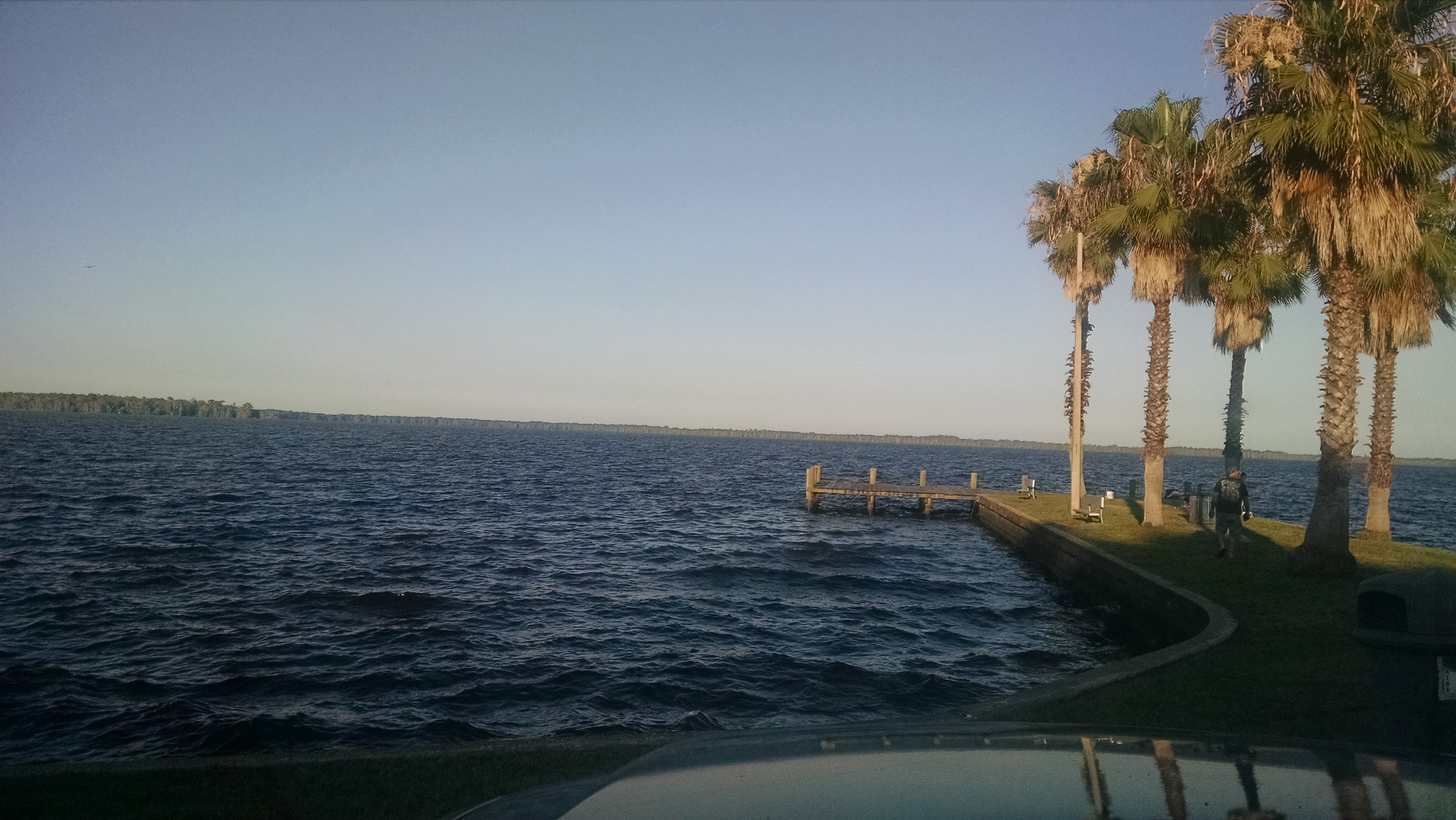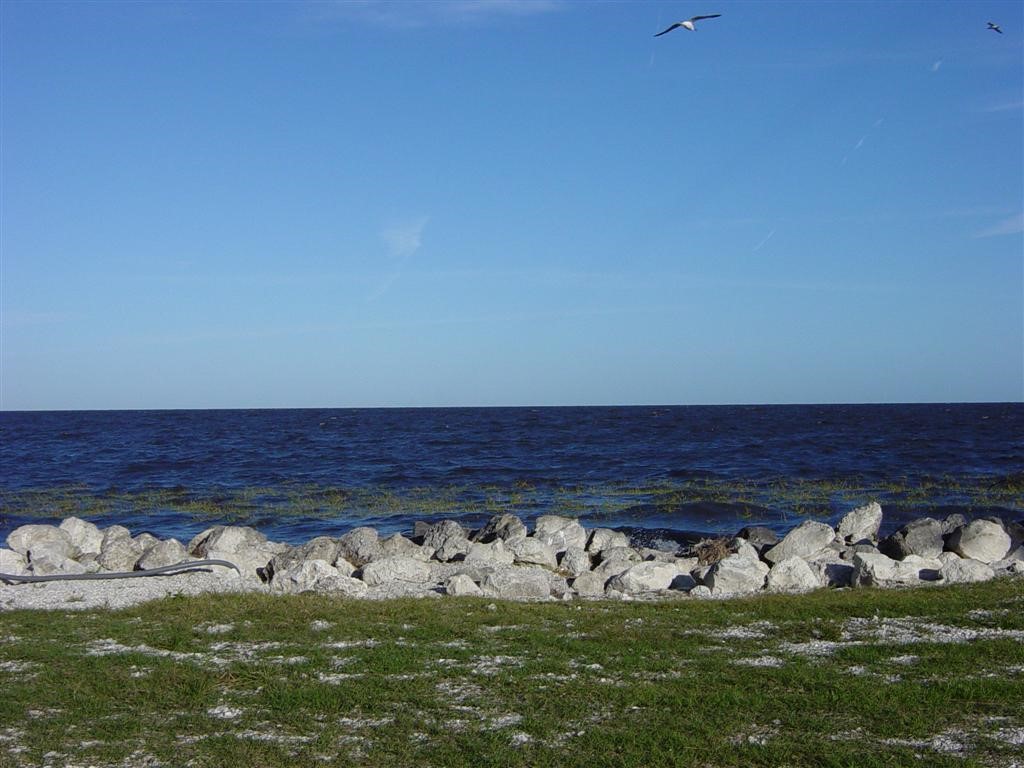The Largest Lakes in Florida

Published on March 24, 2024
Florida, known for its picturesque beaches and lush wetlands, is also home to an impressive array of large lakes that play a crucial role in the state’s ecosystem, culture, and recreation. These freshwater bodies are not only vital for irrigation, drinking water, and habitat for numerous species but also offer myriad recreational opportunities such as fishing, boating, and bird watching. This article explores the seven largest lakes in Florida, delving into their size, significance, and the unique features that each one offers.
Here are the facts:
- The largest lakes in Florida are Lake Okeechobee, Lake George, Lake Seminole, Lake Kissimmee, Lake Apopka, Lake Istokpoga, and Lake Harris.
- The Herbert Hoover Dike around Lake Okeechobee was constructed for flood protection after devastating hurricanes in the 1920s; this massive earthen structure helps manage water levels and protect surrounding areas.
- Despite being a freshwater lake, Lake George has a level of salinity due to inflow from springs like Silver Glen Springs and Salt Springs, supporting a diverse range of aquatic life in slightly brackish conditions.
- Named after the Seminole Native American tribe, the area around Lake Seminole has seen significant historical events, including battles during the Seminole Wars.
- Lake Kissimmee is part of one of the world's largest river restoration projects, aimed at restoring the natural state of the Kissimmee River and its floodplain, leading to improved water quality and wildlife return.
- Once heavily polluted, Lake Apopka has seen significant improvements in water quality and is now a prime bird-watching location, highlighting successful environmental restoration efforts.
1. Lake Okeechobee

Lake Okeechobee, often referred to as Florida’s "Liquid Heart," is the largest lake in the state and the second-largest freshwater lake entirely within the continental United States. Spanning an area of approximately 730 square miles, it plays a pivotal role in South Florida’s water management system, helping to recharge the aquifer and supporting the Caloosahatchee and St. Lucie estuaries. The lake is a key habitat for various wildlife species and a popular destination for fishing, particularly known for its excellent bass fishing.
2. Lake George

As the second-largest lake in Florida, Lake George covers about 46 square miles. It is part of the St. Johns River system and is located in the northeastern part of the state. Lake George is known for its diverse ecosystem, which supports a variety of fish species, making it a favorite among anglers. The lake's wide expanse is also utilized for boating and water sports, offering stunning natural views and opportunities to spot wildlife.
3. Lake Seminole

Bordering Florida and Georgia, Lake Seminole spans approximately 37,500 acres. Despite being a man-made reservoir, it has become an integral part of the region's natural landscape. Lake Seminole is renowned for its fishing, particularly for largemouth bass, catfish, and crappie. Its marshy edges are also a haven for bird watchers and nature enthusiasts who can explore the lake’s rich biodiversity.
4. Lake Kissimmee

Located in central Florida, Lake Kissimmee covers an area of about 35,000 acres. It is crucial for flood control and is part of the Kissimmee River Restoration project, aimed at restoring the river and its floodplain to a more natural state. Lake Kissimmee is a popular spot for boating, fishing, and wildlife observation, offering scenic views and a tranquil environment.
5. Lake Apopka

Once a prime fishing destination, Lake Apopka suffered from pollution but has been the subject of significant restoration efforts. Spanning 30,000 acres, it is the fourth-largest lake in Florida and is situated northwest of Orlando. The lake and its surrounding areas have become an important site for bird watching, especially at the Lake Apopka Wildlife Drive, where visitors can see a variety of bird species in their natural habitat.
6. Lake Istokpoga

With an area of 28,000 acres, Lake Istokpoga is located in Highlands County, south of Orlando. This shallow lake is known for its high-quality bass fishing, drawing anglers from all over the country. The lake’s natural beauty and abundant wildlife also make it a great location for boating, bird watching, and enjoying the serene Florida landscape.
7. Lake Harris

Part of the Harris Chain of Lakes, Lake Harris is in Lake County, central Florida, covering around 22,000 acres. It is known for its clear waters, making it a popular destination for fishing, particularly bass fishing. Lake Harris also offers excellent opportunities for boating and is surrounded by beautiful natural scenery, providing a peaceful retreat for visitors.
The Takeaway
Florida’s lakes are an integral part of the state's landscape, offering a blend of ecological significance, recreational opportunities, and natural beauty. From the vast expanse of Lake Okeechobee to the serene waters of Lake Harris, each lake has its unique charm and importance. These water bodies support a rich diversity of wildlife, provide essential water resources, and offer endless recreational activities. Whether you are an avid angler, a nature enthusiast, or simply seeking a tranquil escape, Florida’s largest lakes offer something for everyone. Their preservation and continued restoration efforts are crucial for maintaining the ecological balance and ensuring that future generations can enjoy these natural treasures.
Category: World Facts